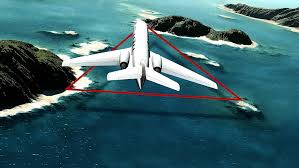Exploring the Mid-Ocean Ridge: A Window Into Earth’s Underwater Mountains

When we think of mountains, we usually picture snow-capped peaks piercing the sky. But did you know the longest mountain range on Earth lies deep beneath the ocean’s surface? It’s called the Mid-Ocean Ridge, and it stretches for over 65,000 kilometers around the globe, forming a continuous chain of underwater mountains.
In this blog, we’ll explore what a mid-ocean ridge is, highlight a prominent example, and uncover why it’s so important for our understanding of Earth’s geology.
🌊 What Is a Mid-Ocean Ridge?
A mid-ocean ridge is an underwater mountain system formed by plate tectonics. It marks the boundary where tectonic plates are moving apart—a process known as seafloor spreading. As the plates diverge, magma from the mantle rises up to fill the gap, solidifying into new oceanic crust. Over time, this continuous volcanic activity builds up a ridge-like feature.
Mid-ocean ridges are not just geological oddities; they play a vital role in recycling Earth’s crust and regulating heat flow from the interior of the planet.
🌍 A Notable Example: The Mid-Atlantic Ridge
One of the most studied and dramatic examples of a mid-ocean ridge is the Mid-Atlantic Ridge (MAR).
📍 Location:
The Mid-Atlantic Ridge runs down the center of the Atlantic Ocean, stretching from the Arctic Ocean near Iceland all the way to the Southern Ocean near the tip of Africa.
🔍 Key Features:
-
Visible Above Water: In a few places, like Iceland, the ridge actually rises above sea level, making it one of the rare spots where you can walk along a mid-ocean ridge.
-
Divergent Plate Boundary: The MAR marks the boundary between the Eurasian and North American plates in the north and the African and South American plates in the south.
-
Seismic Activity: This ridge is geologically active, with frequent earthquakes and volcanic activity due to the movement of tectonic plates.
🧪 Scientific Importance
Studying mid-ocean ridges like the MAR has helped scientists:
-
Understand plate tectonics and continental drift
-
Discover hydrothermal vents, which host unique ecosystems that survive without sunlight
-
Learn about the formation of new ocean floor and the recycling of the Earth’s crust
🐠 Life at the Ridge
One of the most fascinating discoveries near mid-ocean ridges was that of deep-sea hydrothermal vent communities. Despite the absence of sunlight, life thrives here using chemosynthesis, where bacteria convert chemicals like hydrogen sulfide into energy. These ecosystems are home to bizarre creatures like tube worms, giant clams, and blind shrimp.
🌐 Other Notable Mid-Ocean Ridges
While the Mid-Atlantic Ridge is a well-known example, there are others:
-
East Pacific Rise – A fast-spreading ridge off the west coast of South America.
-
Indian Ridge System – Located in the Indian Ocean, connecting to the MAR and the East Pacific Rise.
🧭 Final Thoughts
Mid-ocean ridges are a testament to the dynamic nature of our planet. They remind us that Earth is still very much alive, constantly reshaping itself beneath our feet—or in this case, beneath the waves. The Mid-Atlantic Ridge offers a fascinating glimpse into this hidden world and continues to be a source of discovery and wonder for geologists and oceanographers alike.
Whether you’re a science enthusiast or just curious about the planet, mid-ocean ridges offer an awe-inspiring example of nature’s power, mystery, and beauty.







Leave a Comment